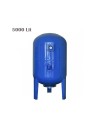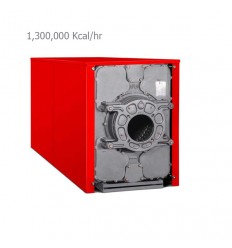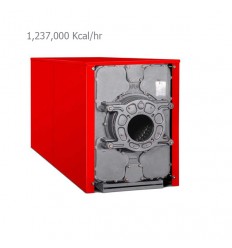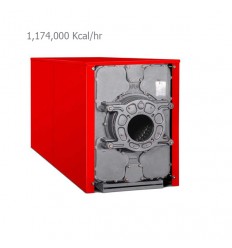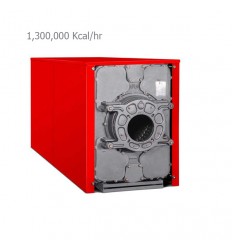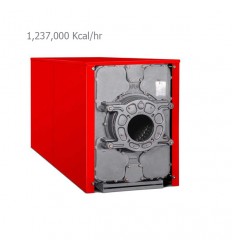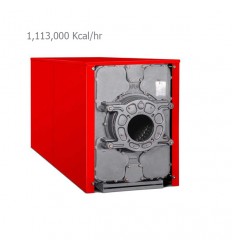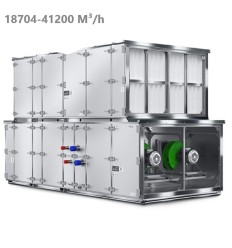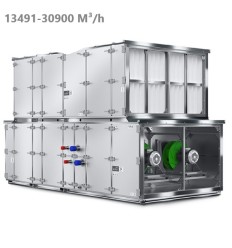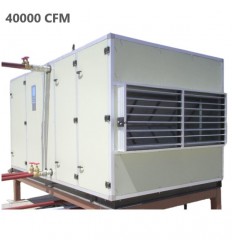- On sale!
- Out-of-Stock
-
Account
-
-
Shopping Cart
Cart is empty.









Type
Type
Brand
Brand
Price
Price
-
IRR0 - IRR559,000,000
On sale
Chauffagekar Star 1300-20 Cast Iron Boiler
- Dimensions of the boiler (length, width, height): 3680 * 900 * 1200 mm
- Number of blades: 20
- Working pressure: 10 bar
- Avoids energy loss with complete insulation of the cloak
Warranty :
10 years Chauffagekar warrantyWarranty and after-sale Services:
10 years
Warranty terms: 10 years warranty since installation- On sale!
Chauffagekar Star 1300-19 Cast Iron Boiler
- Heating energy: 1237000 kcal/h
- Boiler dimensions (length, width, height): 3520*900*1200 mm
- Number of blades: 19
- Working pressure: 10 bar
- Fuel type: natural gas or gasoline
- On sale!
- On sale!
- Out-of-Stock
Chauffagekar Star 1300-18 Cast Iron Boiler
- Heating energy: 1174000 kcal/h
- Boiler dimensions (length, width, height): 3360*900*1200 mm
- Number of blades: 18
- Working pressure: 10 bar
- Fuel type: natural gas or gasoline
10 Years Warranty
10 years
- On sale!
Chauffagekar Superheat 1300-20 Cast-Iron Boiler
- Heating energy: 1,300,000 kcal/h
- Boiler dimensions (length, width, height): 3680*900*1200 mm
- Number of blades: 20
- Working pressure: 6 bar
- Fuel type: natural gas or gasoline
10 Years Warranty
10 years
- On sale!
Chauffagekar Superheat 1300-19 Cast-Iron Boiler
- Heating energy: 1237000 kcal/h
- Boiler dimensions (length, width, height): 3520*900*1200 mm
- Number of blades: 19
- Working pressure: 6 bar
- Fuel type: natural gas or gasoline
10 Years Warranty
10 years
- On sale!
Chauffagekar Star 1300-17 Cast Iron Boiler
- Heating energy: 1113000 kcal/h
- Dimensions of the boiler (length, width, height): 3200*900*1200 mm
- Number of blades: 17
- Working pressure: 10 bar
- Fuel type: natural gas or gasoline
- On sale!
Apartment and hospital Air Handling Unit (AHU)
This guide provides easy-to-understand information, technical specifications, tips, and the best prices to help you purchase all types of air conditioning equipment to control temperature, humidity, and air quality in rooms, theatres, hospitals, etc.
A Guide to Choosing Different Types of Air Handling Units
What is an AHU in hvac? Air handling unit (AHU) is one of the most important types of equipment for providing comfortable and fresh air with the ability to control temperature and humidity in cold and hot seasons. The air handling unit is one of the main equipment of air conditioning systems that can be installed and operated in all climates of Iran.
Air handling units usually include a few components: an air-sealed body, fan, electric motor, air filters, cooling and/or heating coils, humidifier sprayers, inlet and outlet air dampers, and return air and control equipment.
Furthermore, if you are thinking about purifying the air in your home or office, you can see a wide list of those devices in the air purifier section. Keep reading to learn more about AHU types and brands…
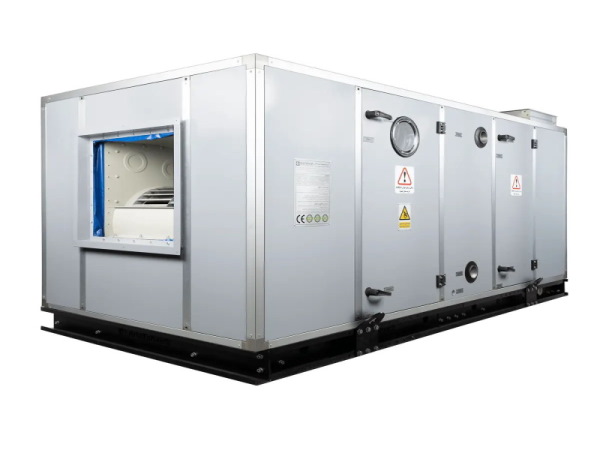
How Does an Air Handling Unit Work?
In air handling units, fresh air and return air from the building are mixed up and then pass through the primary aluminum filter. After that, the air temperature is adjusted by passing through the fins of the cold water or refrigerant coil in the summer, and in the winter, it passes through the fins of the warm water or steam coil.
Then, this air is directed to the different areas through the installed ducts. In addition, air humidification is done by water or steam inside the air handling unit before distribution in the ducts.
Air Handling Unit Applications
In addition to ventilation and providing air with the right temperature, air handling units can transfer clean air with the humidity the user requires to the environment.
In general, it is common to use an air handling unit for spaces that have a large and integrated area or require a significant volume of fresh air, including:
- Gyms
- Hotels and entertainment centers
- Universities and educational centers
- Hospitals and medical centers
- Restaurants and reception halls
- Industrial workshops and factories
- Seminar halls and gatherings
Another important point for the users of all types of air handling units is that these devices are used as central devices and, therefore, cannot be used for separated spaces that require independent and different temperature control (such as residential. office units, or shops in a commercial center).
As we have already mentioned, air handling units are considered a type of air distributor that alone cannot provide cold or hot air, and heat energy must flow through the building's central heating engine system to provide hot air. Naturally, in the case of cooling, cold water of 7 to 12 degrees Celsius must first be transferred from the building's chiller to provide cool air with an output temperature of 16 to 18 degrees Celsius.
Types of Air Handling Units Based on Usage
Air handling units are designed and produced in different types based on several factors, which include:
- Type of Use: home or apartment air handling units, industrial air handling units
- Type of Airflow Control: air handling units with constant air flow (Constant Air Volume) and variable airflow (Variable Air Volume)
- Zoning or Aeration Area: single-zone and multi-zone AHU
- Fan Type: air handling units with suction fan (Draw-Through) and blowing fan (Blow-Through)
- Direction of Air: air handling units with front blower fan or up and down
- Type of Ventilation: air handling units with full fresh or return airflow
Home Air Handling Units (Domestic)
Home air handling units differ greatly from industrial air handling units regarding their internal structure. The working principle of these air handling units is to provide comfortable air with the desired temperature and humidity, which also filters the air and captures the dust to provide clean air. The performance of a home air handling unit is nothing different from an industrial one, which circulates the air through cooling and heating coils to adjust the temperature. They can also adjust the air humidity, but it takes a humidifier.
According to their type of use, such as in cinema centers, mosques, seminar halls, hospitals, etc., the air handling units can be equipped with special multi-stage filters, which come into operation through several stages to clean the air completely and even absorb pollutants. Home air handling units are designed and produced in smaller dimensions than industrial air handling units because they must be installed in a more accessible environment.
Heat Recovery Air Handling Units
In a brief explanation, it can be said that the heat recovery air conditioner or energy recovery is an air conditioner that consists of two passing air streams, and using a heat exchanger (of the air-to-air type), heat is extracted from the return airflow. Transfers to fresh air flow. To learn more about the structure, operation, and benefits of the heat recovery air conditioner, refer to the article on the heat recovery air conditioner and its use.
Industrial Air Handling Units
Today, industrial air handling units are one of the best options among central air handling units. Industrial air handling units and other cooling/heating devices, such as chillers and boilers, can provide the appropriate air temperature in large industrial and commercial environments. In addition, in various industries, sometimes, during the production stages, there is a need for air flow with a certain temperature and humidity level. In such cases, industrial air handling units are a priority.
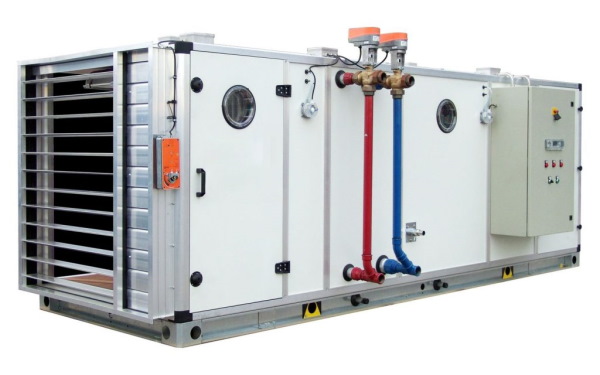
Different Types of Industrial Air Handling Units
Let us again emphasize that air handling units cannot provide cooling or heating independently. Air handling units are a type of air distributor that can cool or heat the desired environment by using cold water from the chiller or hot water from the boiler of the engine room. Industrial air handling units are divided into 3 types in terms of application. However, they are pretty similar in terms of work relativity, but due to the different uses in some places, there are changes in the structure and components, which we will describe below.
Common Industrial Air Handling Units
A common industrial air handling unit has a cooling and heating coil and can be used in large commercial and industrial places such as factories. The fan of this device is of a forward-blowing type, and its filter is usually made of aluminum. Which mixes the inside air with a percentage of fresh outside air and cools or heats the air after directing it through the cooling or heating coil. Then, it is through the air channels implemented in the desired areas of the building.
Full Fresh Industrial Air Handling Units
FULL FRESH air handling units (providing 100% fresh air) naturally have stronger cooling and heating coils than normal air handling units because they must be able to cool all the hot air from outside. In addition to washable aluminum filters, these air-handling units have bag filters to help sterilize the air. The fan of this device is usually of the backward type and is suitable for use in places such as hospitals that need 100% fresh air with positive pressure.
Hygienic Industrial Air Handling Units
As its name suggests, a hygienic industrial air handling unit is suitable for operating rooms, server rooms, clean rooms, etc. Because in these places it is necessary to have cool and pleasant air, the air handling unit can provide clean and sterile air, free of bacteria. For this purpose, they use special filters called HEPA and ULPA.
Therefore, the complete air sealing of the body of hygienic air handling units is very important. In addition to using high-quality insulation, the device should be installed by an expert.
Air Handling Unit Components
Air handling units mainly have components including insulated, insulated body, ventilation fan, electric motor, air filters, cooling and heating coils, humidifying sprayers, mixing box, inlet and outlet air dampers, and return air and control equipment; the most important which are listed in the followings:
- Body and Insulation: The body of the air handling unit consists of three parts: chassis, frame, and walls. The walls of the air handling unit body include two parts, the inner wall, and the outer wall, the outer wall is made of galvanized sheet, and the inner wall is made of galvanized, aluminum or steel, depending on the use of the device, which is naturally filled with special insulation between these two walls.
- Fan and the Electric Motor: The blower fan supplies the energy needed to circulate the air inside the air channels of the building. In other words, the air handling unit fan takes the process of sucking the outside air into the device, passing it through the surface of the cooling and heating coils and the filtration system, and then transferring the conditioned air inside the units. Among the fans used in air handling units are centrifugal fans and plug fans (forward or backward type). It is very important to pay attention to the power of the fan's electric motor to overcome the frictional pressure drop of the air volume passing through the main and secondary channels and air distribution valves in the desired environment.
- Heating/Cooling Coils: Coils are an important part of air handling units in the airflow path, and the ambient temperature changes when the air passes through the cooling coils (in the summer season) and the heating coils (in the winter). In the case of cooling and heating coils, in addition to paying attention to the required thermal level based on the cooling and thermal load calculations of the desired space, it is also important to consider the number of rows of fins per inch of the coil.
- Air Filters: The air filtration system uses unique technologies to purify and clean the incoming air to the building units. Based on the type of technology and manufacturing standards, ingredients, and ability to remove pollutants, these filters include different types such as HEPA, ULPA, bag filter, metal pre-filter, fiberglass, and pleated (panel). The type and number of filters used in each air handling unit are determined based on the level of air pollution in the project location and the level of sensitivity or necessity in using clean air.

Factors to Consider When Buying an Air Handling Unit
Here are the 19 most important factors that will help you determine and purchase the best air handling unit that suits your needs in any term:
- Single-area or multi-area
- The shape of the AHU (Horizontal or vertical)
- Type of the AHU (normal or hygienic)
- Location of the air handling unit (indoor or outdoor)
- Input & output air temperature
- Ducting Type (forward or upward blower)
- Climate Type (dry and wet)
- Total aeration rate (CFM)
- Height above sea level
- Type of the coil (DX or cooled water for cooling & electric, steam, or hot water for heating)
- Number of coils in a row
- Fin material and maximum density (FPI)
- Determining the design limitations of the air handling unit
- External static pressure required by the fan
- Type and number of air filters
- Type of return, fresh, and supply dampers, along with their actuator
- Required accessories (humidifier, smoke and fire detector, pressure and temperature gauge, temperature and humidity sensor)
- Material type and thickness of the body
- Type of coating/paint-coating
Explanation: Air handling units with a DX coil use refrigerant gas to provide cooling instead of cold water in their cooling coils.
Notes:
- Determining the role of the coil in air handling units, pay attention to the number of rows, thermal surface, and fins per inch of heating and cooling coils, as well as the diameter and thickness of the coil, body sheet, and frames of the device.
- Having a humidity-increasing system or not having one.
- To calculate the cooling and thermal load of the area accurately, the mentioned factors should also be examined by the engineers or experts of the DamaTajhiz HVAC Group.
Choosing the Best AHU Cooling /Heating Load Based on Climate Type
One of the most important factors in calculating the cooling and thermal load of the air handling unit is its type in terms of the required temperature and humidity in different climates, such as:
- Hot and Moderate Climates: Cities such as Tehran, Semnan, Karaj, Mashhad, Shiraz, Isfahan, Sulaymaniyah, Kirkuk, Mosul, Aleppo, Erbil, Damascus, Beirut and...,
- Hot and Humid climates: Ahvaz, Bandar Abbas, Chabahar, Karachi, Basra, Dubai, Sharjah, Muscat, Abu Dhabi, Jeddah, Sanaa, Aden, and Doha.
- Hot and Dry Climate: Cities include Yazd, Kerman, Zahedan, Zabul, Baghdad, Karbala, Najaf, and Islamabad.
- Cold and Moderate Climates: like Tabriz, Urmia, Yerevan, Ankara, Khujand, Samarkand, Dushanbe, and Ashgabat.
- Moderate and Humid Climates: Cities such as Rasht, Baku, Sari, Antalya, and even the cities located in cold and dry climates and weather conditions, which are naturally used in heat load calculations and the cooling of the project, will have a very high impact.
Air Handling Units Cooling /Heating Load Based on Ducting
The calculation and implementation of air distribution channels (in addition to using galvanized sheets with suitable thickness), insulation of the channel, implementation of appropriate fasteners and supports, and channel dimensions at each section of the route.
As well as the determination of the appropriate speed of air passage, compliance with the standards for changing the direction and the internal radius of the arches in the air transmission channels, and finally, the dimensions of the air outlet valve in each space with the appropriate speed.
Necessarily, according to engineering calculations, using duct workers and complying with the design and calculation standards of air transmission ducts under the supervision of engineers should be done.
DamaTajhiz HVAC Group; The best prices and brands of construction equipment

Air Handling Unit Accessories (Optional)
Considering the special importance of important equipment such as an air handling unit in providing the desired temperature, humidity, and air quality in projects and buildings, naturally, special equipment and accessories can be considered to improve the performance and quality of the output air of this equipment, the most important of which are presented as follows. :
- Using Blue Fin coil or Gold Fin coil to improve and increase heat exchange efficiency as well as the useful life of the air handling unit
- Installation of a three-way motorized solenoid valve (base) with transformer, motor linkage, and sequential channel thermostat to adjust the flow rate and bypass of the water entering the cooling coil and also the heating coil of the air handling unit based on the temperature requirement at every hour of the day and in every season of the year.
- Hepa and Olpa filters to purify the air coming out of the device as much as possible and improve the quality of the air coming out of the air handling unit as much as possible based on the needs of the project and the client's request.
- Implement a humidification system for some projects such as greenhouses, mushroom cultivation halls, sensitive treatment centers, etc., using a pump and a network of pipes and water nozzles installed inside the air handling unit and a humidistat humidity control system in the outlet air channel.
- Silencer to reduce the sound of the air handling unit fan, especially in high capacities in sensitive hospital, commercial, and residential projects, to provide more comfort and well-being for the users and residents of the project.
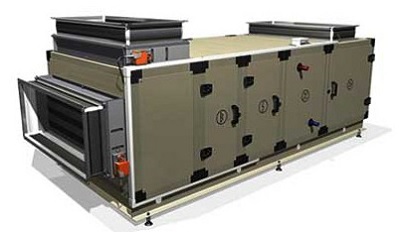
Temperature Control Process of an Air Handling Unit
Basically, in air handling units, temperature control is done in the following three ways:
1st Method: Three-way Electro Motor
Use an electric three-way valve or a motor installed on the return pipe of the air handling unit's cold and hot water coil and a thermostat installed in the air return channel to the air handling unit. The operation of disconnecting and connecting or increasing and decreasing the flow of hot water or the cold water of the coil is used to adjust the ambient temperature.
2nd Method: The Thermostats
It is installed in the room, corridor, or another suitable place to control some basic commands, such as the ON/OFF command and fan coil mode of the thermostat. The control system must be designed so the channel thermostats and three-way valves work first. Then, in the next step, if necessary, the room thermostat gives an order to the ventilation fan to change the speed.
3rd Method: Damper Motor
The air coming out of the air handling unit is controlled by a damper motor installed in the way of the fresh air inlet and mixed with the return air to adjust the desired temperature according to the thermostat's temperature data.
It is technically necessary to install a flow switch in the outlet water path of the evaporator (Chilled Water) towards the cold water coil of the heat exchange equipment to give a Stop command to the chiller when the circulator pumps of the cooling circuit are turned off.
Air Handling Unit Installation Tips
Here are the 6 installation tips that, if you follow, you can get the most out of your air handling unit:
- In large air handling units due to the large dimensions of the air handling unit, it is not possible to transport them easily, so large air handling units are first transported in disassembled form (separated parts) and reassembled at the installation site.
- Air handling units of galvanized sheets may be made vertically or horizontally according to the location and installation position. Air handling units are designed and manufactured in a single-zone or multi-zone way. In the one-zone type, all parts of the building covered by the air handling unit are ventilated with uniform temperature and humidity. In multi-zone air handling units, with the help of special dampers, it is possible to aerate with different temperatures and humidity to different areas of the building.
- The foundation of air handling units should be considered according to the project's structure, the device's weight, and dimensions.
- To make it possible to replace the coil of the air handling unit after its long period of operation, according to the engineering standards, it is necessary to consider a space equal to 1.5 times the width of the device at the place of installation of the air handling unit on one side.
- It is technically necessary to consider the sewer drain in the air handling unit room for cleaning and periodic services.
- One of the important points in operating and maintaining the efficiency and effectiveness of air handling units is to perform proper insulation, especially on the ducts outside the building, which are exposed to sunlight and heat in summer and cold in winter.
Buying an Air Handling Unit
To buy an air handling unit, you must first determine the required air handling unit's thermal and cooling load capacity, aeration volume, and technical specifications. On the website of DamaTajhiz HVAC Group, technical information of dozens of air handling units from reputed brands with their main guarantee has been presented so you can enjoy the good feeling of optimal and smart shopping.
Price of an Air Handling Unit
The price of an air handling unit can vary largely based on the capacity, mode, brand, and other specifications. Different types of air handling units with different qualities and prices are available on the website of DamaTajhiz HVAC Group; all have reasonable prices and discounts already included.
Can a fan coil be used instead of an Air Handling Unit?
Air handling units are usually more useful than fan coils in humid areas. In addition to improving the quality of the outgoing air, installing fan coils requires implementing a wide network of back-and-forth piping and drains in the building, and the humidity of the environment and the ground also causes early decay of the pipe network. The fan coils are installed in the building, while the channels of the air handling unit, usually installed on top of the false ceiling, have a much longer lifespan than the pipes installed on the building floor.
Dear user
- If, after reading the above article, you have more questions about purchasing vertical and horizontal air handling units, you can contact DamaTajhiz HVAC Group and receive advice from the air conditioning equipment sales experts and ask your questions.
- In the group of air conditioners of Damatajhiz specialized collection, technical information of dozens of models of air conditioners from reputable companies has been presented for you, dear experts and employers, to review and buy.
- Also, because DamaTajhiz, as an official member of the Heating and Air Conditioning Equipment Dealers Association, provides all types of air conditioners in the Middle East region, if you need an Air Handling Unit (AHU) for any of the countries in the region, you can place your purchase order with confidence. Leave product warranty and reasonable price to our sales experts.
"Buy with confidence and peace of mind."

Trademark registration certificate - Stewardship business license from Virtual Business Association - Business license from Heating and Air Conditioning Equipment Association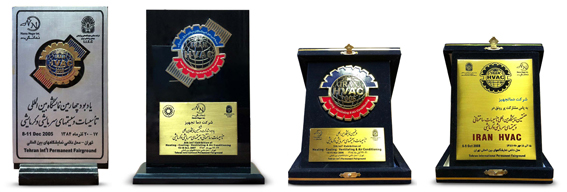
The presence of Damatajhiz HVAC Group in international exhibitions of construction facilities and cooling and heating systems from 2014 to 2016
Order from you, follow up from us.
In addition to a valid business license from the Heating and Air Conditioning Trade Association, DamaTajhiz HVAC has an electronic trust symbol. It started its store site in 2013 in the head office of Tehran.
1M³ = 35.315 Ft.³
1K.Cal. = 4 B.T.U
1Atm. = 14.7 P.S.I
G.P.M. X 0.2271 = 1M³/hr
12000 B.T.U. = 1Ton of Ref.
1M³/hr = 0.588 C.F.M

| |
Sharing the above texts on social networks lets your friends know its important content.
There are 59 products.
Active filters
Damaco Air Handling Unit AHU Single zone/Multi-zone 4049
- Possibility of access to the device, fan room, and filter room with hinged inspection door and polypropylene handle
- Ability to install cooling coils, direct expansion coils DX and thermal coils
- Hot dip galvanized sheet body (HOT DIP)
- Out-of-Stock
Damaco Air Handling Unit AHU Single zone/Multi-zone 4049
- Possibility of access to the device, fan room, and filter room with hinged inspection door and polypropylene handle
- Ability to install cooling coils, direct expansion coils DX and thermal coils
- Hot dip galvanized sheet body (HOT DIP)
- Out-of-Stock
comments
(0 comment)add comment
Shopping Cart
Cart is empty.




